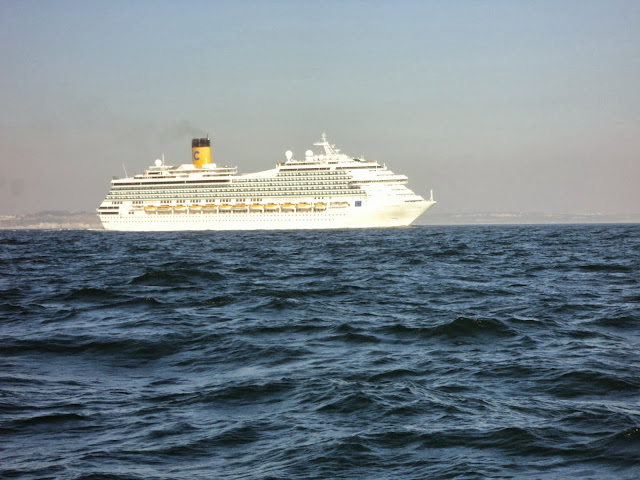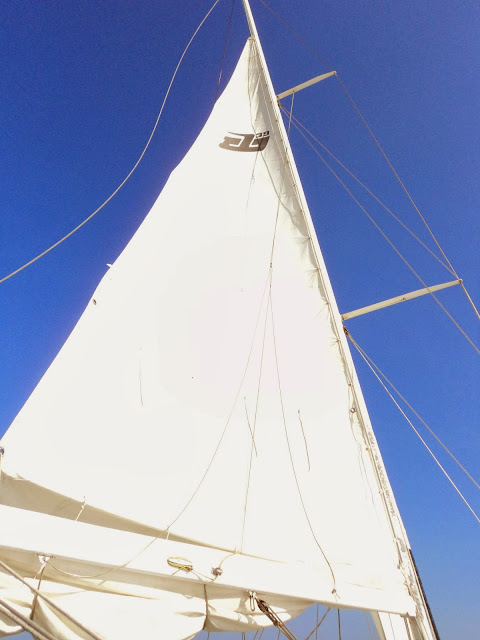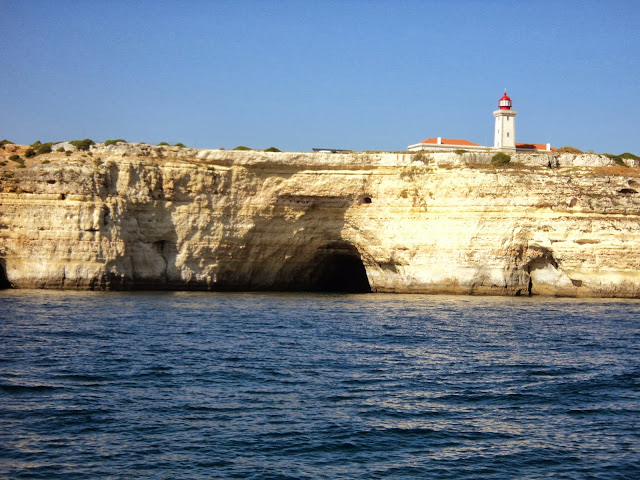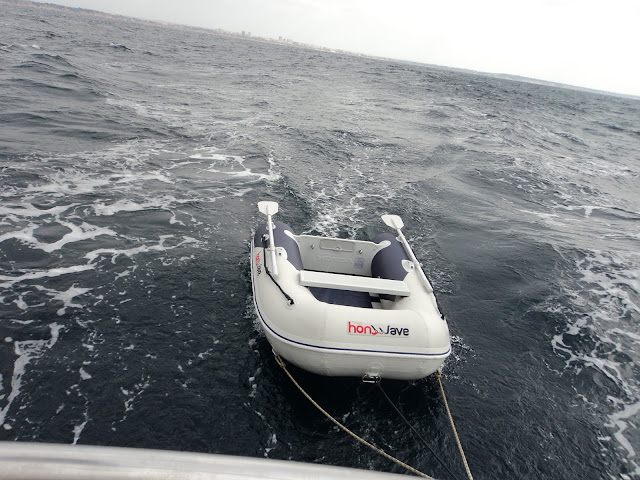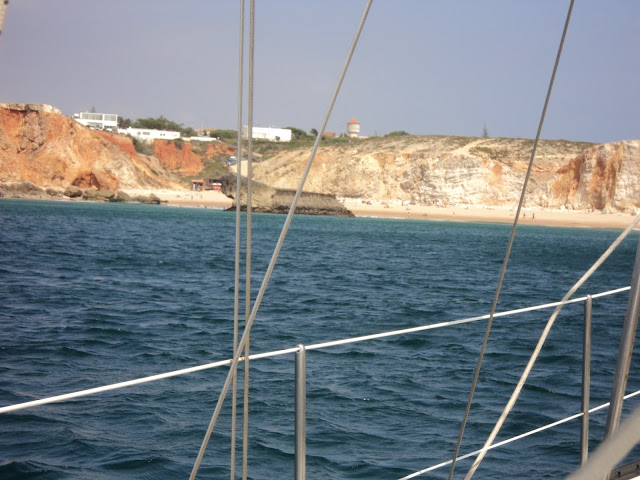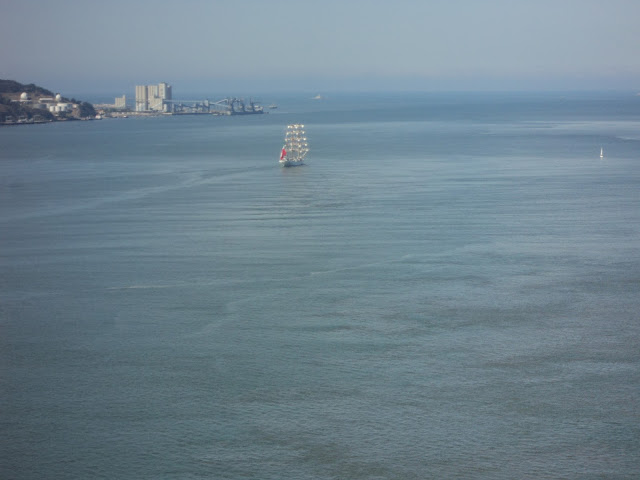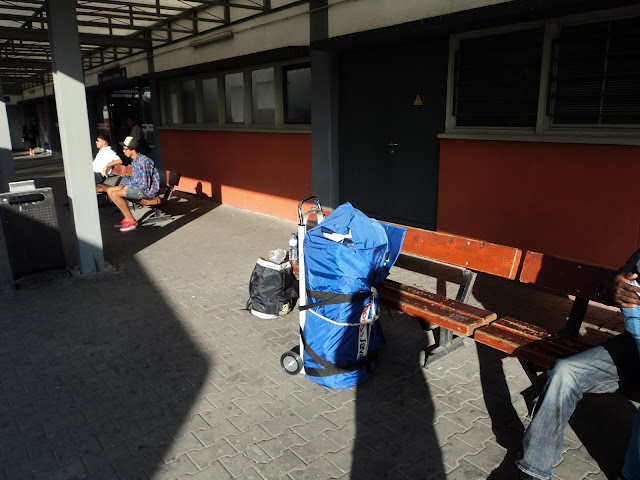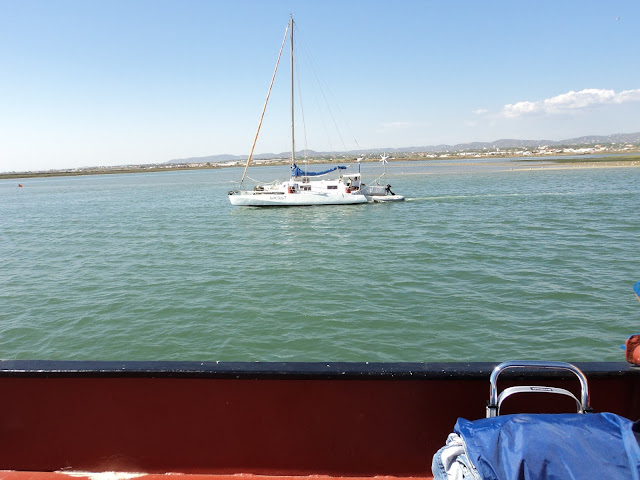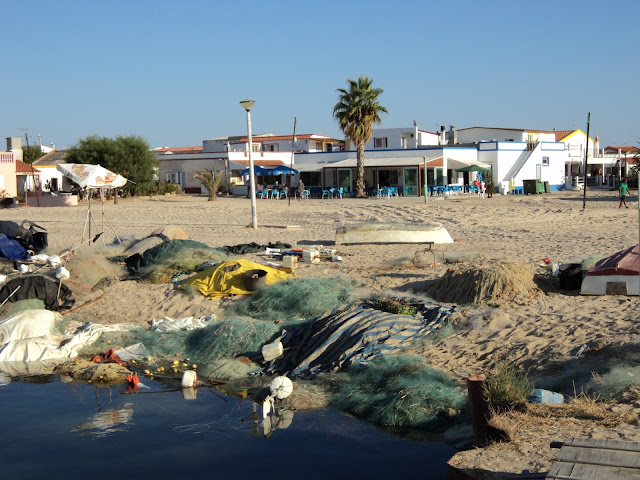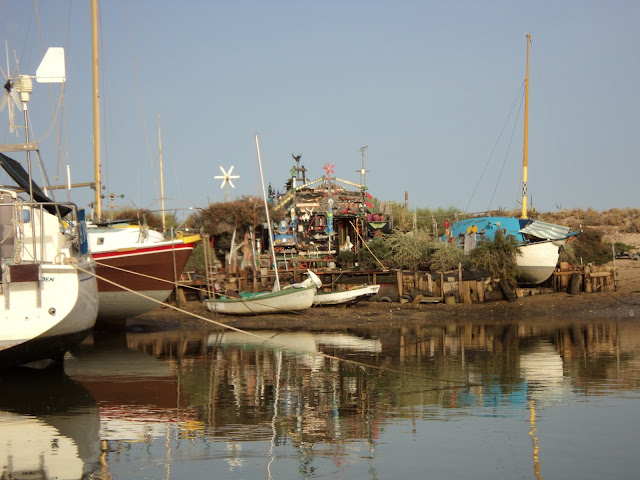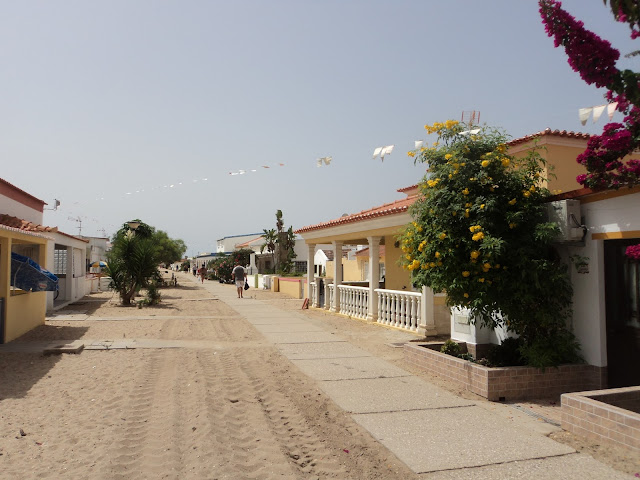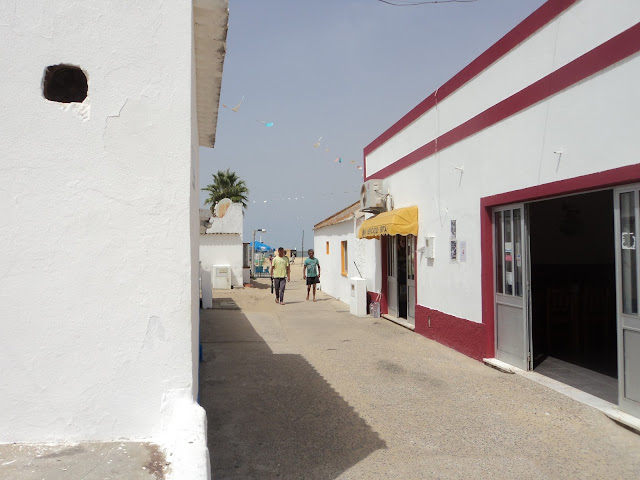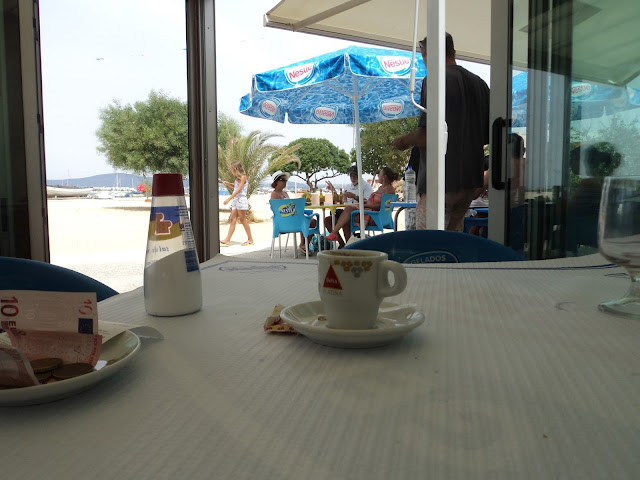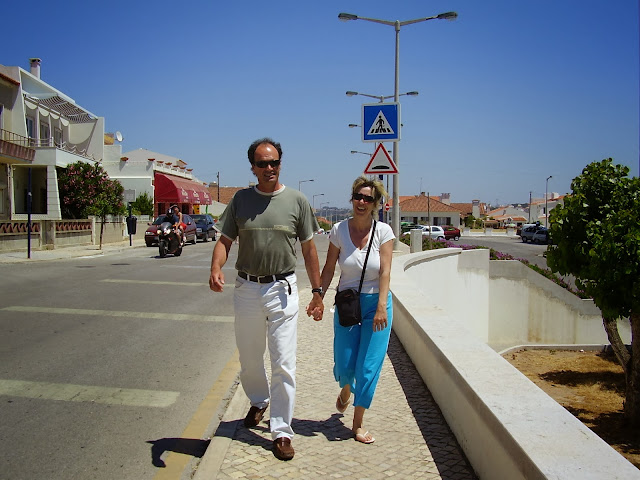 |
| Going home...going back to life on land. |
The wind howled in the Cascais anchorage. I checked out my food supply: a can of baby mackerel, a few onions, 4 very old rusty cans of whole tomatoes, lots of pasta, olive oil and a big bag of cheap cookies. Oh yes, and plenty of wine.
If you read the last posts, you'll know that every attempt to go shopping had been aborted. I did go ashore in Sines, but it was late and all the shops were closed. I had rushed straight to the Adega de Sines restaurant, which is way more important than hunting for an off-hours grocery store.
Anyway, I fried the onions in olive oil, boiled plenty of pasta, added some spices, poured the wine and finished with a few cookies for dessert and more wine. A perfect meal.
Then Délio, a former neighbor's son, called me on the mobile. I had ran into him in town before the trip, and he was really keen on joining me on the Cascais-Peniche run. Now he was all gung-ho for it along with his younger brother (younger as in 25 or so) and another friend.
I described the conditions, but he said it was a perfectly calm evening in Praia da Areia Branca.
"OK, be here at 6:30 am and bring food because I'm cleaned out," I told him. I knew rounding the cape might be hell tomorrow, but saying so would give them the impression I didn't want them to come along.
"Where will we meet?"
"Go to the marina fuel dock, and I'll pick you up."
They called at 6:30 sharp the next morning. It was dark and I was awake but still lying in bed listening to the wind blowing not so hard anymore.
I pulled up anchor and re-anchored closer to the fuel dock and reception pontoons that were packed full with boats that either had been too scared to enter the marina the previous night or whose anchor had failed to hold.
I ferried Délio and the others to the boat in the dinghy, and then we motored along the sheltered coast toward Cabo Raso where the nasty stuff happens. As we approached the cape I could see the whitecaps like little waves breaking on the beach. I thought about the towed dinghy but, being an idiot, rationalized that it was the wind and not the waves that had capsized it the day before. Conditions would improve after 5 or 6 miles, and the wind was nothing compared to yesterday.
Right! As we rounded the cape, the wind blasted in our faces and the enormously steep chop had the boat bucking like a rodeo bull. The engineless dinghy capsized immediately. As hard as we tried we couldn't upright it. Instead, we hung it from the transom high enough so that only the end of the tubes were dragging through the water. But it was bouncing around, the secured oars were flapping all over and I felt like shit for torturing my new dinghy.
Fortunately, these guys were well prepared with delicious sandwiches, fish sticks and other goodies. They're all surfers so they were having the time of their life. They wanted to raise some sail. I explained that we'd end up in the Azores if we attempted to sail, and their food supply wouldn't last that long.
Conditions settled down after Cabo da Roca. We released the dinghy back in the water and plodded on to Peniche.
I can't tell you how melancholic I always feel on reaching home. If I could, I'd sail back south the very next day. Home means working long hours, cutting the grass, going to the dentist...ad nausea. Home is where you get old waiting for next year.
I get over it or, rather, I surrender to it after a week or two. What else can you do? I won't answer that.
I get over it or, rather, I surrender to it after a week or two. What else can you do? I won't answer that.
 |
| This is home. Could be worse, right? |


